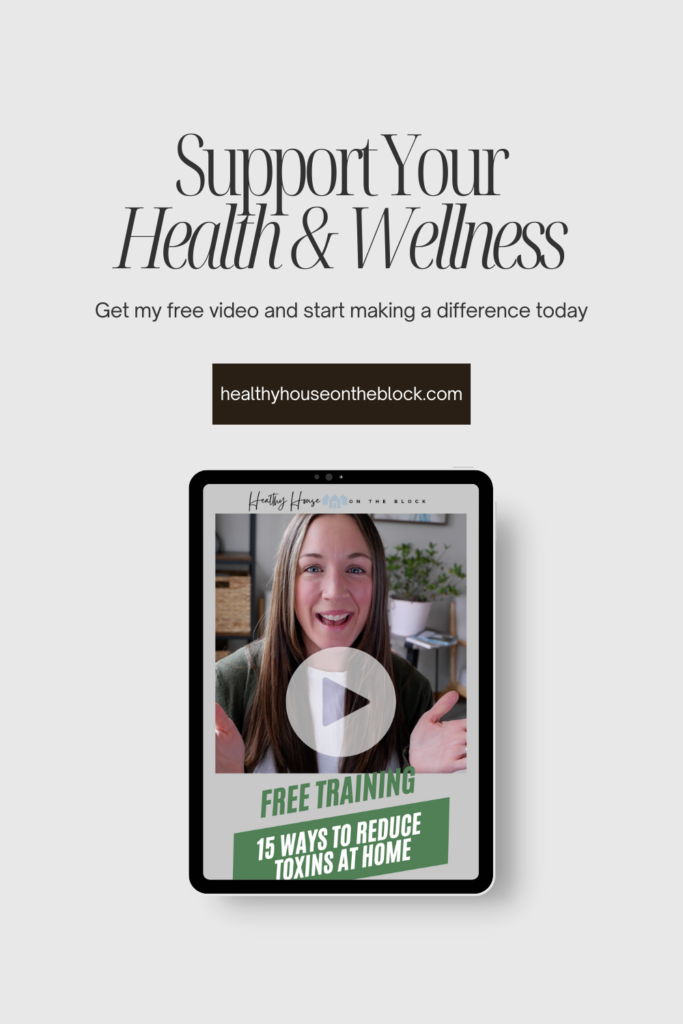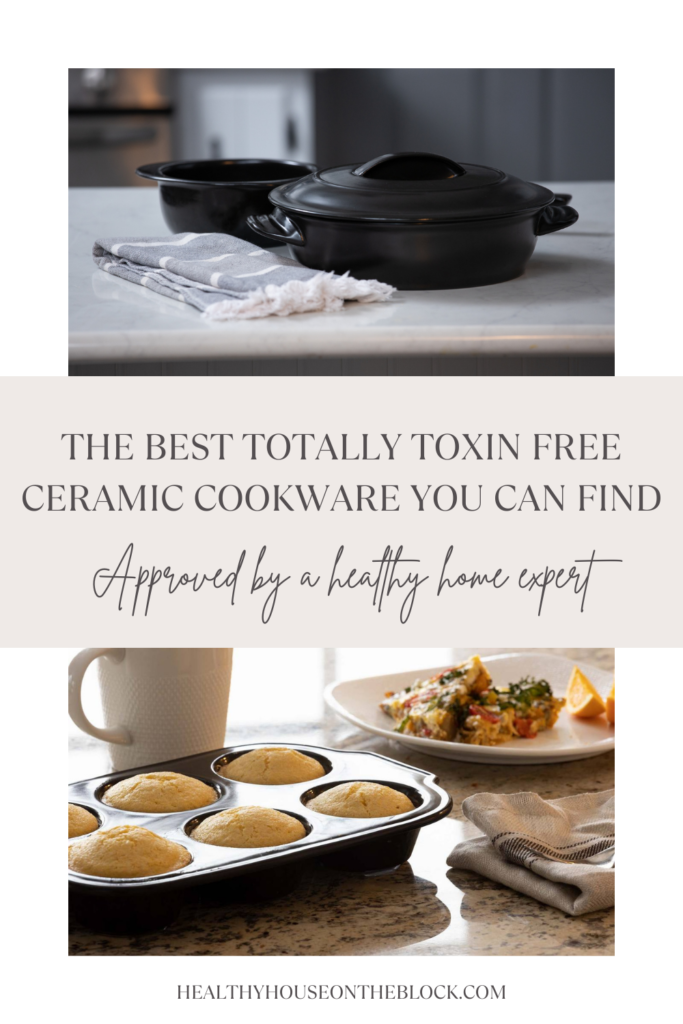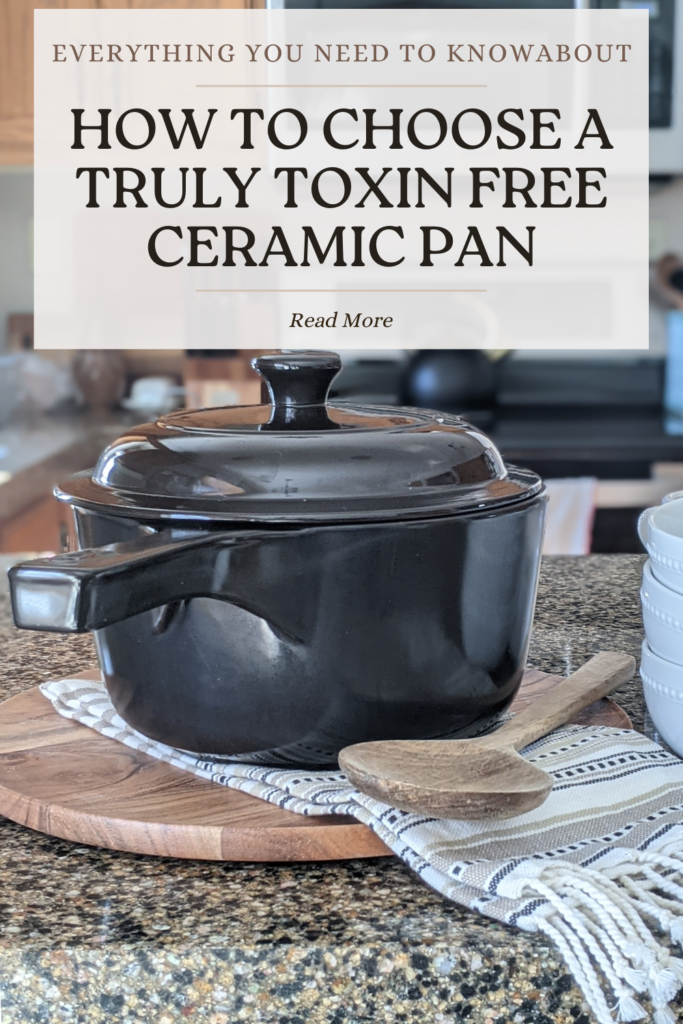
The pots and pans we cook with are often a huge investment and we keep them for a really long time and use them almost daily. In our house pots and pans are at the heart of every meal, which is why I knew that it would be a very important part of my toxin free, healthy home space. Ceramic cookware can be a really great swap for other toxic options, but you have to know what to look for.
My rule has always been the items and products I come into the most contact with are the products and items that I must be the most conscious about.
For our family and the way we cook, pots and pans have been at the top of my list for a long time. Years and years ago we swapped out all our teflon, non-stick pans for stainless steel. I’ll admit that the learning curve in cooking was serious after this. When you get used to non-stick it takes a little bit to change how you do things.
But we managed our healthy swap and have never looked back . More recently we started using more ceramic cookware, just for something a little easier to clean up. This led us to ceramic pots, pans and griddles.
But the truth is that not all ceramic cookware is made the same. Many companies tout that they’re “green” and “toxin free”, but there are still some concerning chemicals in their products. And then there are bloggers left and right giving you their opinions on what’s safe and not safe, which can lead to a confusing hunt for the right pots and pans.
In fact, one of the big mistakes I see all the time is that consumers trust companies that claim their non stick ceramic pan is totally toxin free.
It makes sense though we are bombarded with advertisements on social media, promotional emails to our inbox and eye-catching product packaging at the store.
I’m here to break down for you what really is healthy when it comes to ceramic and what should be avoided.
While some of what I share is opinion based, as always, I’ll be sharing with you the studies and links to research that will point you in the right direction based on fact.

NOT ALL CERAMIC COOKWARE IS THE SAME
When looking at products for your home, I always like to give them a rating. There are things we should avoid altogether. Then there are middle of the road “healthier” options. And finally, when the stars align and it’s possible to add this to your home, there’s the toxin free, healthiest option.
Ceramic cookware often falls into two categories, the “healthier option” and the non toxic, healthiest option.
There are two types of ceramic cookware. The first is 100% ceramic cookware (which in my opinion is the best option when you’re trying to eliminate toxins and if you find the right brand is 100% toxin free).
The second option is ceramic coated cookware. This is where products like Caraway come into play. I put these coated pans into the category of “healthier”. It’s not the best, but it’s definitely better than teflon.
If you’re opting for a ceramic coated pan, remember that the interior of the pan is often aluminum and the outside of the pan is usually coated in Thermolon, a silica (sand) based component. I talked about the negative effects of cooking with aluminum in this post, however, because it’s coated, it likely is a safer option.
For me there may be a problem with HOW the ceramic coating is adhered to the pan. Many tough adhesives and glues are problematic and contain VOCs, formaldehyde and phthalates.
There is also the issue of scratching with these pans. They tend to scratch much easier than a 100% ceramic pan. Once there is a scratch on a ceramic coated pan, the pan should be discarded due to toxin leaching.
This is the exact reason that these ceramic coated pans are in the “healthier” category not the toxin free category.

TOXINS TO WATCH OUT FOR IN CERAMIC COOKWARE
Unfortunately, a non-stick ceramic pan is not really a healthy or safe option. While many companies use a coating that is free from PFOAs and PTFE, it still uses a Thermolon coating. Thermalon unfortunately has not been tested enough to ensure that it is 100% safe. This coating is mineral based, but it still is a man made material. I would put it in the “better” category, but not in the BEST and toxin-free category. Likely the coating itself is not necessarily the problem, but however it is adhered to the metal in the pan could be toxic.
Another thing to be aware of is that ceramic coated cookware is very different from 100% ceramic cookware. Ceramic coated is usually a metallic cookware (often aluminum) that is coated with layers of a ceramic based product.
You will want to verify that your ceramic cookware is free of lead and cadmium. These are heavy metals that are toxic to our bodies, and can leach into food when heated and cooked with. Exposure to lead can cause kidney and brain damage and anemia. Cadmium is unsafe as it targets the body’s cardiovascular system and respiratory systems.

CERAMIC PANS VS. STAINLESS STEEL PANS
Two of my favorite types of non toxic pans are both stainless steel and ceramic. I cook with both of these multiple times a week and there are benefits and downfalls to both in terms of cooking.
As for their toxicity, both are 100% toxin free and an EXCELLENT option for any healthy kitchen.
The one downfall to ceramic pans is that they are breakable. And believe it or not we’ve broken our favorite one before by sheer accident. If ceramic pans are not cared for properly, they can crack and break, ruining the pan. In contrast, stainless steel is tried and true in terms of breakability and will likely never break.
100% ceramic cookware is the slightest bit naturally non-stick. While it’s still quite helpful to use some sort of oil or butter to prevent sticking completely, I find I need far less than with a stainless steel pan.
Ceramic pans also retain a large portion of their heat and heat very evenly, while stainless steel pans may not retain quite as much heat and can have spots that are hotter than others due to the core of the pan.
So you can see, depending on what you’re going for or what your needs are, you could use each pan in different applications.

MY FAVORITE CERAMIC COOKWARE
One of my favorite 100% pure ceramic cookware brands is Xtrema pots and pans. The reason being, because they contain no glues or coatings. The pan itself is COMPLETELY ceramic. Because of this there is no lead, cadmium or other heavy metals in the pan.
One thing to remember is that the pans are not necessarily non-stick. This might be one of those deal breakers for some, but given the fact that we’re coming from stainless steel, it is a great option for us.
The other reason that I love Xtrema is that they are constantly testing their product and materials to ensure they are safe for use and don’t contain trace amounts of toxins. The other cool thing is that they actually publish all their test reports on their website.
Because I’ve used them myself for years, they’ve given me a coupon to share for 15% off your purchase with code HHOTB.
HOW TO COOK AND CARE FOR CERAMIC POTS AND PANS
Using Oil: Because true 100% ceramic pans are NOT non-stick, you’ll want to use a high quality oil. We love using a spray bottle intended for oil on our pans to evenly, yet lightly coat it.
Heating Slowly: The best way to heat up a ceramic pan is to heat it to a low temperature first and gradually increase the heat as you need to.
Handwash: Even if a pan says dishwasher safe, it’s always best to wash it by hand. This ensures you won’t scratch the surface and you’ll get all the residue from oil and food off completely.
Hot to Cold: Make sure you don’t run your hot pan under cold water as this can cause the ceramic cookware to crack. This can also be true if you put the hot pan directly on cold granite or countertop. Use a hot pad after heating your cookware.
Cooking Utensils: I love wood cooking utensils as well as silicone utensils. You can certainly use metal, but you do run the risk of leaving marks on the ceramic cookware finish.

Ceramic cookware can be an excellent swap in your kitchen when you’re looking to reduce toxins in your space. However, it’s important to know just what to look for and what brands to trust. Xtrema is my pan of choice and I couldn’t be happier.
Share this:
- Click to share on Facebook (Opens in new window) Facebook
- Click to share on LinkedIn (Opens in new window) LinkedIn
- Click to share on Reddit (Opens in new window) Reddit
- Click to share on Pinterest (Opens in new window) Pinterest
- Click to print (Opens in new window) Print
- Click to share on X (Opens in new window) X



